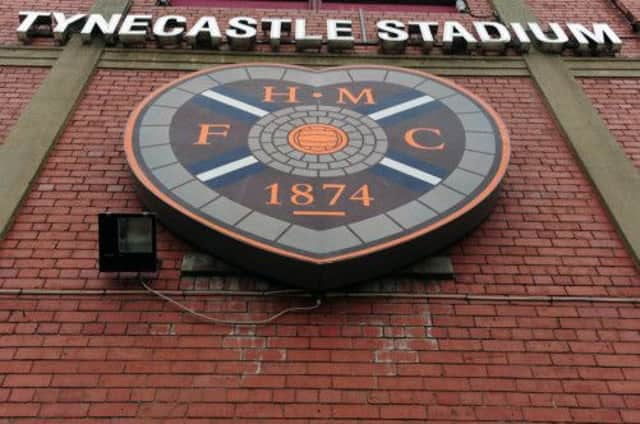Hearts to honour war heroes of ‘greatest team’


All will be revealed at 1pm today when the boards are removed to reveal the faces of a group of men on a bronze plaque. This team are described as Hearts’ greatest-ever side. Few will argue with the billing.
After all, many of the players made the ultimate sacrifice in the First World War. They did so under the banner of Heart of Midlothian FC, after enlisting to Sir George McCrae’s battalion of the Royal Scots following a start to the season where they had won all eight games.
Advertisement
Hide AdAdvertisement
Hide AdInspired by their lead, others followed, including players from Hibs, Raith and Falkirk, but it was the selfless actions of the Hearts players that forestalled a question in Parliament aimed at suspending professional football in Britain, with accusations of cowardice made against footballers perceived as being reluctant to sign up.
McCrae’s Battalion, “the footballers’ battalion”, encouraged the formation of a similar unit made up of professional footballers in the English league. They were an inspirational force, which made the absence of a memorial to mark their heroism on what was the western front all the more regrettable.
Rectifying this matter was the first objective and a cairn was erected at Contalmaison in 2004. Now the spot where the players gathered for a photograph after enlisting is set to be marked. Immediately after signing the papers in the Tynecastle boardroom, they donned their maroon and white kit and posed outside the recently-opened main stand.
Of course, the story familiar to those who have read Jack Alexander’s book, McCrae’s Battalion. The author began his campaign for the players’ contribution to the war effort to be recognised in what he describes as “the dying days of the Chris Robinson regime”.
It says something that the erection of a cairn in France and installing of a plaque at Tynecastle has been achieved during a spell when the running of the club became so chaotic, ultimately leading to administration earlier this year. “We have raised all the money ourselves,” notes Alexander.
The unveiling of the plaque is the first in a series of events to mark the centenary of McCrae’s Battalion. “Good ideas like the plaque at Tynecastle have taken a back seat until now. We now have most of what needs to be done at Contalmaison finished,” explains Alexander.
The “Tynecastle Bronze” is placed near where the original photograph was taken. Over half a century later, Walter Scott, one of the players who tried to join up that morning but failed the medical, spotted Alexander walking home from school in his maroon-coloured George Watson’s college scarf, and called him over. “So you are a Hearts fan?” he asked him.
The surprising news is that Alexander is not a Hearts supporter. Or at least, he is not one anymore. He has not attended a game under his own steam since 1979, although was invited to watch one last season. Rather, he has a passionate interest in the Great War. An Edinburgh native, it was natural that he might be inspired to research such a story.
Advertisement
Hide AdAdvertisement
Hide AdIt has also remained with him since childhood, thanks to Scott’s first hand account of the day 13 of his team-mates signed up for McCrae’s new battalion. Scott explained to Alexander the details of what happened that morning, including how the club cat, Blackie, strayed into the photo. Annan Ness, a half-back for Hearts, grabbed the cat as it walked by and so Blackie is now on the plaque too, preserved for all time.
Sadly, seven Hearts players perished in France. “John McCartney, the manager, just wanted the boys to be safe because, as he said himself, they were all his sons,” says Alexander, who helped erect the 3ft by 2ft plaque on Monday. “Just looking at the plaque on the wall a few feet from where the boys had been standing in November 1914 was very poignant. Finally, they were being remembered on the spot where it had all begun.
“Sir George could have signed them up anywhere,” says Alexander, “but he chose to do it at Tynecastle because it looked good. And the campaign against professional football was so virulent and also so deeply unfair that having that photograph of men in their football strips at a football ground in the nation’s press was what was needed to stop the slur against the game.
“These were the first guys to do what they did at the very moment that Parliament was about to stop British professional football – these were the guys that stopped that happening.
Alexander is humble about his own contribution. “It does not stem from my book,” he says. “The only reason I am doing this is because of what they did in 1914.”
Several special guests have been invited to the unveiling, including the Edinburgh Lord Provost and Keith Brown, the Scottish government veterans’ minister. Lance Corporal David Timmins, who lost an eye while fighting in Afghanistan, will also attend. Danny Wilson, the Hearts skipper, will take one corner of the drape when the plaque is unveiled this morning.